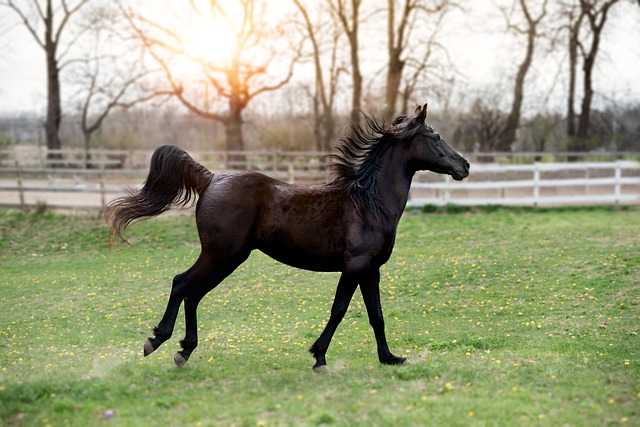Reasons a Horse May Not Have a Balanced Gait
The horse is expected to perform every day to its best ability. Riders often miss the signs of an unhappy horse and blame bad temper on bad manners.
There are horses that turn and snap at the rider when the saddle is placed on its back. Sometimes that can be bad manners, but often the rider fails to investigate this sort of behavior to get to the root of the problem.
Then there are horses who just do not seem to be in balance whilst being ridden. Again hours of schooling do not seem to change the horse’s gait. Sometimes the more the horse gets worked the worse the problem seems to become.

Reasons for Imbalance

- An ill fitting saddle. There may be pinching of the back muscles or a saddle that is too narrow across the wither.
- The bridle does not fit correctly. A bit may be worn, a tooth may be giving the horse some grief or the bit is pinching the corners of the horse’s lips.
- Shoes may not fit correctly or a nail has come loose and is causing the horse pain.
- The mood of the horse is important. Just like humans, horses have different moods for different reasons.
The Sore Back

A horse can have a sore back for different reasons. The obvious one is the saddle that does not fit properly. It has to be remembered that a horse’s musculature changes with the amount of work, weight gain or loss, and age.
A saddle that fitted a skinny horse really well may not fit so well once the horse has gained some weight. Careful attention should be paid every time the horse is saddled to see how the saddle fits. A once a year inspection from a professional is a must.
Another reason for a sore back, a less obvious one, is a pulled muscle from playing rough in the paddock. These are more difficult to diagnose and regular visits from a message therapist are advisable if the horse is in regular work and out in the paddock with other horses.
The Horse’s Moods

Sometimes riders can forget that horses like people have different moods at different times. It can happen that a horse gets little sleep one night due to a disturbance, like a new paddock neighbor, and thus will not perform the next day as well as it normally does.
If during competition season the horses routine is changed there also may be a difference in the horse’s mood or temperament. There are horses who are not ‘morning’ horses and therefore do not perform well first thing in the morning.
Good Shoes Means a Sound Horse
If a horse wears shoes it is important to make sure that they are replaced regularly. Most horses wear shoes between four to six weeks before a new set needs to be fitted. During that time it is possible for a nail to come loose and cause discomfort and even lameness in the horse.
It can be tempting to try and keep a set of shoes on the horse for as long as possible to save money. However, this can make a horse lame. As the toe grows longer more pressure is placed on the heel of the horses foot, which can cause bruising to the heel and result in a lame horse.
Examining All Equipment to Rule out Bad Horse Behaviour
To summarize it is essential that the rider is vigilant with respect to making sure that the horse’s gear fits properly and does not cause the horse discomfort or pain, which leads to imbalance and bad behavior.
Once a rider is satisfied that the gear fits properly, including the shoes, and the horse still does not seem to be balanced and behaving well, the rider can look to other reasons for the horses behavior and address those.






